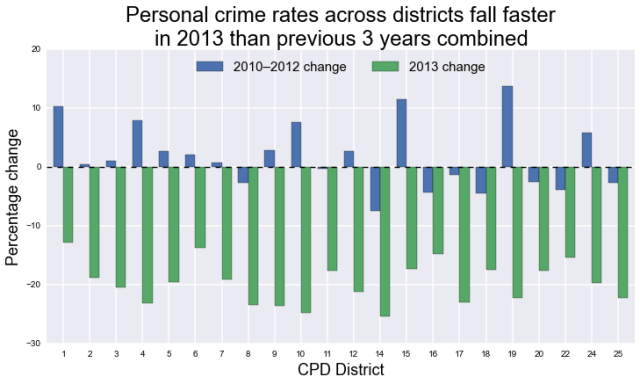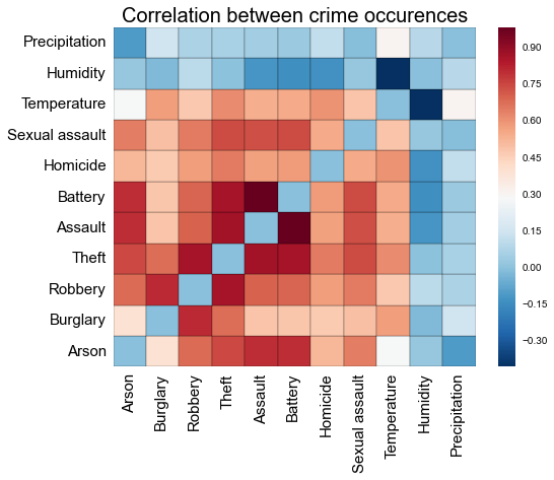Using Science To Analyze Crime/Weather Relationships In Chicago
By Chuck Sudo in News on Apr 24, 2014 9:00PM

Graph by Brian Keegan
Mayor Rahm Emanuel made waves earlier this week when he said about violence in Chicago “it’s whether you have values.” Emanuel also made the rare admission that maybe warmer temperatures might have something to do with the spikes in homicides, assaults, arsons and other major crimes in Chicago.
That was followed by Police Superintendent Garry McCarthy saying Emanuel’s mandate for Chicago Public Schools to install air conditioning in schools with no or partial air conditioning may help lower the city’s violent crime rates. Per the Sun-Times’ Michael Sneed, 42,000 CPS students attend CPS summer school and other programs during the summer months. “Summer programming in a cool environment provides young people with positive ways to focus their energy, and is an important part of preventing violence and protecting public safety,” McCarthy said.
What’s notable about Emanuel’s and McCarthy’s remarks, days apart of each other, is it runs counter to the Chicago Police Department’s standard party line that spikes in violence have nothing to do with warmer weather. And yet through Wednesday the Police Department only recorded 91 homicides this year, a major drop-off coinciding with the coldest winter to hit Chicago in over a century.
Brian Keegan, a former Northwestern University student now doing graduate studies at Northeastern University in Boston, was interested enough in the correlation between major crimes in Chicago and temperature changes to study them and see not only if the two were related, but if he could predict the months, days and hours crimes would occur based on historic precedent. Keegan also was interested in seeing how the Police Department’s reclassifying of major crimes to lower crimes or non-criminal incidents (as reported in Chicago magazine) would affect the numbers. So he charted the 2013 drop-off in personal crime rates across CPD districts to determine which ones had the greatest discrepancies in reporting. Observe.

Brian Keegan
For his research, Keegan ran a type of analysis called a power spectrum that is literally used for separating signal from noise—it basically detects whether there are underlying regular cycles in data. Keegan says it does a pretty damned good job predicting personal crime rates (defined as assault, battery, sexual assault, and sex offense), property crime rates (arson, burglary, motor vehicle theft, robbery, theft) and homicides using just temperature and day of the year. Here's what Keegan found plotting the homicide numbers with changes in temperature by time of day and year.

Brian Keegan
Keegan then plotted correlations between major crime statistics and some other variables like temperature, humidity and precipitation, among others. Redder colors are stronger correlations, bluer colors are weaker or negative correlations. The strongest correlation Keegan found (darkest red) is between Battery and Assault: when batteries are high assaults are also high. The weakest correlation we find is between Humidity and Temperature: when temperature is high, humidity is low.
Keegan is doing some fascinating research here and you can follow his updates at his GitHub site.
